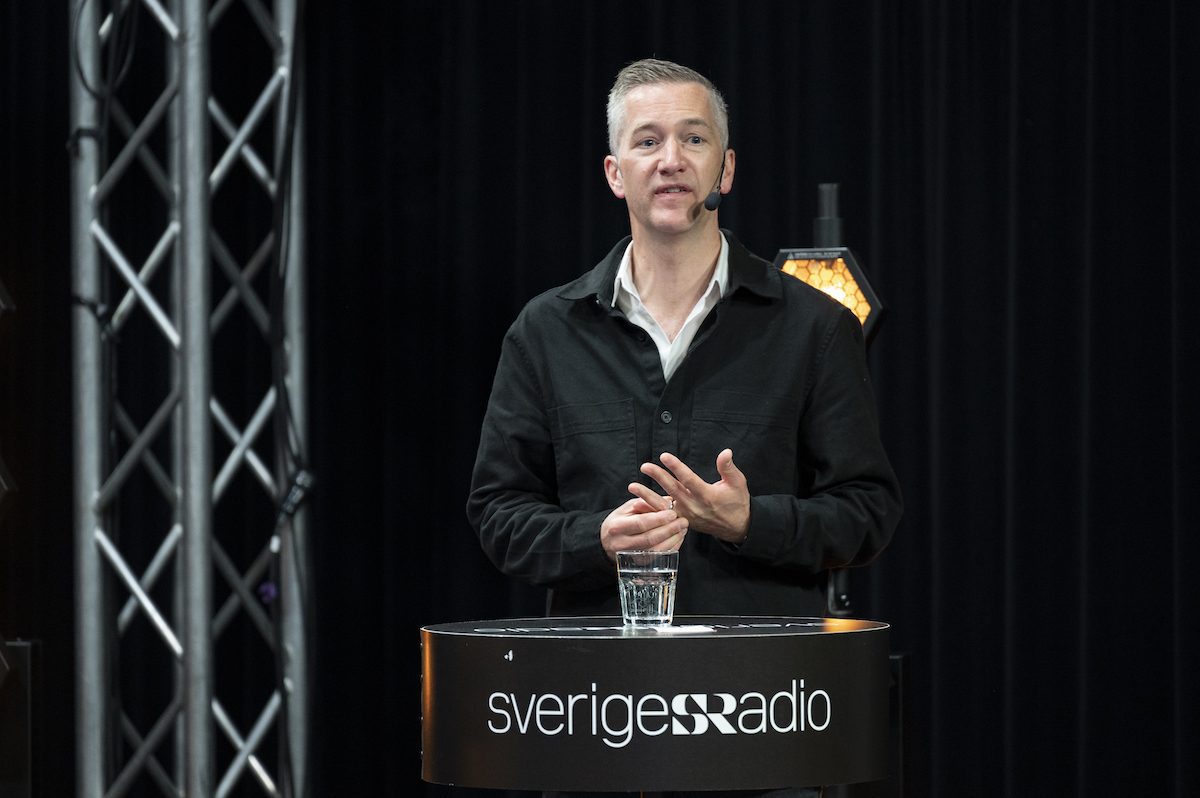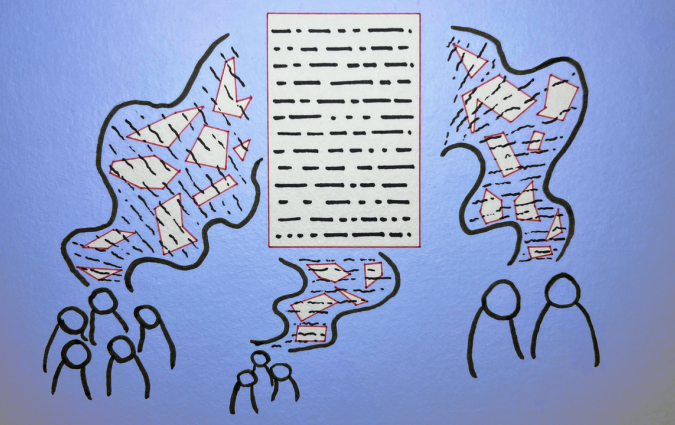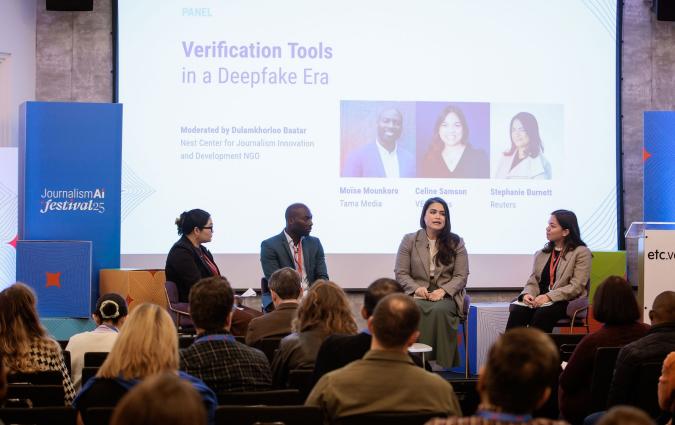How Swedish Radio balances AI and journalism without falling for hype

Olle Zachrison, Head of Artificial Intelligence and News Strategy at Swedish Radio.
This article is part of a five-part series on AI and the future of audio. The entire series, which includes pieces and short podcast episodes, can be found at this link.
How do you best integrate AI in your news strategy as a public service broadcasting organisation? That is a question that Swedish Radio has been pondering and tackling first hand for the past year. During this time, they have been reshaping audio news production and curation teams for the age of artificial intelligence.
As part of our new podcast series on audio and AI, I spoke with Olle Zachrison, Head of Artificial Intelligence and News Strategy at Swedish Radio. Our conversation was edited for clarity and length.
Listen to our 12-minute episode
Q. How are you applying AI at Swedish Radio?
A. We use it for a range of things. For example, transcription is very central for us as an audio based company. All the news content that we produce in audio – 360 news clips a day and also a lot of podcasts – all of this material is transcribed in an internal system to make it more searchable. That's a very good example of how our journalists can get a quick overview of our content and also find content from different parts of the organisation in a much more efficient way.
We also use an editorial algorithm to curate our news output in our app’s news playlists and also our online offerings. This is a value-driven approach, where editors assess every news clip in different dimensions and that makes up a kind of algorithmic score that decides where that news item is displayed [on our own platforms].
Now we are looking at the range of new AI initiatives in the audio field. We are doing both concrete projects and explorations. In terms of concrete projects, this autumn we want to start surfacing transcriptions to the audience in our own app. This is an accessibility initiative. We know that 1.5 million Swedes have some kind of hearing difficulty and they can’t understand what's happening on our podcasts or our news stories. To give them textual support, where we transcribe the audio, will be really good for accessibility purposes and this is something that is central to our public service mission too.
Q. What role does AI play in the listeners' experience? How has AI changed the way audiences experience Swedish Radio?
A. We don’t have any kind of generative AI products. We are actually very careful in that field. We want to use generative AI tools, of course, to assist and guide the editorial process, but we want to have a human in the loop and complete human supervision of all the AI-generated applications that we have. That's very central to us.
There is some stuff that we display to the audience. For example, automatic recommendations, provided by an AI recommendation engine that we built together with European Broadcasting Union colleagues. Sometimes we use AI-generated illustrations and we have more room for manoeuvre for example in drama productions than in news journalism. In news journalism, everything is more strict. For example, we have in our guidelines not to use synthetic or cloned voices.
Q. With the boom of generative AI, so many newsrooms are now experimenting with AI and looking at how to apply AI into their own news strategies. As a public service media organisation, how do you balance successfully deploying AI while also not getting lost in the hype?
A. I want us to keep our heads cool a bit and calm down. What are these AI tools? They are terrific tools, but they are tools to assist journalism. We are not a kind of platform with automated content. We do news journalism. We have to see that our role in doing real human-based journalism has never been more important: to be out there and talk to real people is a critical source of valuation.
Serious media companies are going in the wrong direction if they see the advent of the generative AI models as a way to start automating all their products. We should remember that real journalism is about other stuff. That’s a starting point for us: to go back to real hardcore journalism and then see how generative AI models can help us to do that better.
Q. What ethical considerations are you keeping in mind when experimenting with AI in the newsroom?
A. It can be everything. Should we have these synthetic voices? How should we use external tools from AI tech companies? How do we think about letting them train on our data? What are the ethical considerations around copyright? Should we publish AI-generated music? How do we explain to the audience what we do with AI and AI transparency?
There are so many kinds of different ethical and legal discussions that we are having at the moment. A good thing is that we have now a new chapter in our public service handbook which is dedicated to generative AI at Swedish Radio.
Q. Speaking of AI transparency, you are also the co-founder of the Nordic AI Journalism Network. The organisation recently released the AI Transparency Project. How transparent should news organisations be about their AI use?
A. This is a very good and complex question. When you think about it, the first minute you think, ‘Hey, of course, we should be transparent about this. We are serious publishers, so we have to be transparent.’ On the other hand, people come to our brands because they trust us and trust our journalism. Then, in a way, it doesn't matter if we use AI in the production process because we have to make sure anyway that everything we publish is kind of fact-based, true, impartial, and so on.
So where are the red lines? Where to be transparent? In this industry-wide recommendations that we have now in Sweden – which is, by the way, a unique initiative – we say that when AI has a significant impact on journalism, we should be transparent and then we have a kind of standardised phrasing for explaining that clearly in the product.
Q. You have been the head of AI and news strategies for Swedish radio for almost a year and so many innovations in the industry have been implemented and explored since then. Where do you see the future of AI and audio going in the next few years?
A. We are going to see massive changes when it comes to competition in the audio landscape. If I were a news publisher, I would definitely try out what some companies are doing. For example, automatic podcasts or news summaries in audio form or having more articles being presented by cloned voices.
For publishers who don’t have audio as their primary area, I would start by including or exploring more audio products. That increases competition for us, which is good. But then we have to even more clearly explain what our unique selling point is. This means having a really meticulous control over the final output and also defining those public service values that we bring to the market.
Another thing I think it’s worth trying is creating new experiences. For example, take when you listen to something in the car. That’s crucial for us because it's such a big moment for radio consumption. We are going to see a lot of new experiences there: more personalised mixes but also maybe conversational search. Imagine that you can speak in your car to Swedish Radio and get the most relevant content from the location you are in or on topics that you are interested in. So there is a chance to create a more seamless interaction with media companies by using voice. We are gonna see much more of that in the coming years.
In every email we send you'll find original reporting, evidence-based insights, online seminars and readings curated from 100s of sources - all in 5 minutes.
- Twice a week
- More than 20,000 people receive it
- Unsubscribe any time
signup block
In every email we send you'll find original reporting, evidence-based insights, online seminars and readings curated from 100s of sources - all in 5 minutes.
- Twice a week
- More than 20,000 people receive it
- Unsubscribe any time






